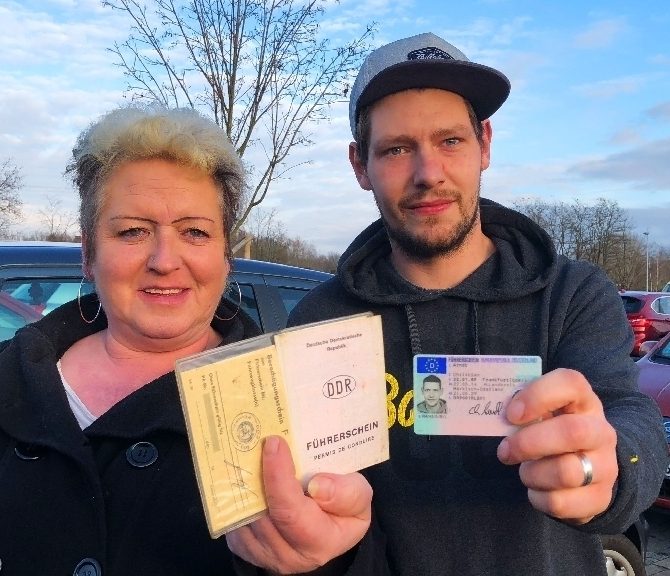The 10 Most Terrifying Things About Buy A Driver's License Legally
How to Legally Buy a Driver's License: A Comprehensive Guide
Acquiring a driver's license is a significant milestone for numerous people, representing self-reliance and the ability to travel easily. Nevertheless, the processes and guidelines surrounding obtaining a chauffeur's license can be complex, leading some individuals to seek faster ways. It is important to highlight that buying a chauffeur's license legally isn't about bypassing guidelines; rather, it's about understanding the legitimate processes for obtaining a chauffeur's license in your jurisdiction. This post aims to inform readers about the appropriate treatments and standards for acquiring a chauffeur's license legally.
Comprehending the Legal Process of Obtaining a Driver's License
Before diving into the requisite steps for acquiring a driver's license, it's vital to comprehend the legal structure that governs these processes. Each state or nation has its own Department of Motor Vehicles (DMV) or comparable authority, which regulates the issuance of chauffeur's licenses. Here's a breakdown of the common actions associated with obtaining a chauffeur's license legally:
Step
Description
1
Eligibility Check: Verify age, residency, and other requirements.
2
Student's Permit (if required): Some areas require obtaining a learner's license before looking for a full license.
3
Driver's Education: Complete any required driver's education courses.
4
Practice Driving: Accumulate the required number of practice hours.
5
Written Test: Pass a written test covering traffic laws and policies.
6
Roadway Test: Successfully finish a driving test with an inspector.
7
Application Submission: Submit the application in addition to needed documents and charges.
8
Receiving the License: After passing all tests and meeting requirements, receive the driver's license.
Step-by-Step Breakdown of Each Phase
1. Eligibility Check
The very first step towards obtaining a motorist's license is to confirm that you satisfy the eligibility requirements. Generally, this includes being of a particular age (typically in between 16 to 18 years), being a resident of the state in which you are applying, and having valid identification.
2. Student's Permit
In many places, you need to initially acquire a learner's license, which enables you to practice driving under particular limitations. This permit frequently requires passing an initial written test and is usually available to younger applicants.
3. Driver's Education
Several states mandate completion of a chauffeur's education course that consists of both class direction and behind-the-wheel training. This education helps brand-new chauffeurs comprehend safe driving practices and state-specific traffic laws.
4. Practice Driving
Most jurisdictions need a set variety of hours driving under guidance before you can take the roadway test. Examine your state's policies to learn how many hours are needed and what external conditions are needed (e.g., night driving).
5. Composed Test
Before taking the roadway test, candidates need to normally complete a composed assessment. This test generally evaluates knowledge of road indications, traffic laws, and safe driving methods.
6. Roadway Test
The road test assesses your practical driving abilities. An examiner will evaluate your ability to deal with a car while complying with traffic laws throughout a set driving route.
7. Application Submission
After passing the tests, you will require to send an official application for your driver's license. This can generally be done in individual at your local DMV office or in some cases online. Guarantee you have the required documents, such as identity verification and evidence of residency, and be prepared to pay the license fee.
8. Receiving the License
As soon as all requirements are satisfied, you will receive your motorist's license. Keep in mind that in some jurisdictions, a provisional license might be released at first, followed by a complete license after maintaining a tidy driving record for a given period.
Often Asked Questions (FAQs)
1. Can I utilize a foreign motorist's license in the United States?
Yes, lots of states allow travelers to drive with a valid foreign driver's license for a set duration. Nevertheless, it's necessary to examine specific state guidelines, as the guidelines differ.
2. What is the minimum age to get a chauffeur's license in the United States?
This differs by state, but the minimum age is usually in between 16 and 18 years. It is recommended to talk to your state's DMV.
3. For how long does Führerschein Kaufen Deutschland take to receive a chauffeur's license after passing tests?
As soon as all requirements are satisfied, lots of states issue the license on the exact same day, usually in the kind of a short-lived license up until the main card gets here by mail.
4. What documents do I require to obtain a motorist's license?
Documents typically consist of proof of identity (passport, birth certificate), evidence of residency (utility costs, lease), Social Security number, and in some cases, school presence records for minors.
5. Can I get a motorist's license if I have a rap sheet?
Having a criminal record may impact your capability to obtain a motorist's license, particularly if the offense connects to vehicle operation. Regulations vary by state, so it's vital to investigate specific requirements.
Obtaining a driver's license legally requires a clear understanding of the specific processes, requirements, and regulations in your location. While it may appear troublesome, following the correct actions ensures security, compliance with the law, and a valid license that supports the freedom to drive legally. By prioritizing education, practice, and adherence to legal guidelines, prospective drivers can confidently browse the journey to becoming certified vehicle drivers.
